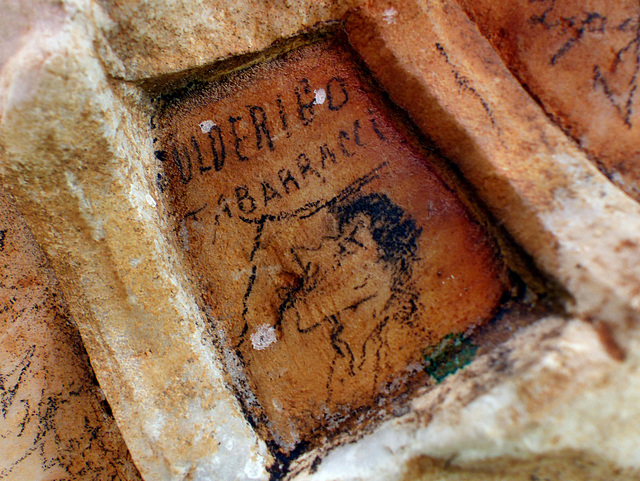Spoleto - San Pietro extra moenia
Spoleto - San Rocco
Spoleto - San Paolo inter vineas
Spoleto - San Salvatore
Spoleto - San Salvatore
Spoleto - San Salvatore
Spoleto - San Salvatore
Spoleto - Rocca Albornoziana
Spoleto - San Ponziano
Spoleto - San Ponziano
Spoleto - San Ponziano
Spoleto - San Ponziano
Spoleto - San Ponziano
Spoleto - San Ponziano
Pissignano - Le Fonti del Clitunno
Pissignano - Tempietto del Clitunno
Pissignano - Tempietto del Clitunno
Terni - San Francesco
Terni - Piazza della Repubblica
Terni - Duomo di Terni
Bologna - Bottega Della Luce
Bologna - Le due torri
Bologna - Night Rock
Spoleto - San Pietro extra moenia
Spoleto - San Pietro extra moenia
Spoleto - San Pietro extra moenia
Spoleto - San Pietro extra moenia
Spoleto - San Pietro extra moenia
Spoleto - San Pietro extra moenia
Spoleto - San Pietro extra moenia
Spoleto - San Pietro extra moenia
Spoleto - Basilica di Sant’Eufemia
Spoleto - Basilica di Sant’Eufemia
Spoleto - Basilica di Sant’Eufemia
Spoleto - Piazza del Duomo
Spoleto - Duomo di Spoleto
Spoleto - Duomo di Spoleto
Spoleto - Duomo di Spoleto
Spoleto - Duomo di Spoleto
Spoleto - Duomo di Spoleto
Spoleto - Corso Giuseppe Mazzini
Spoleto - Roman theater
Spoleto - Richard Serra
Spoleto - Mobilità alternativa
Ferentillo - Abbazia di San Pietro in Valle
Location
Lat, Lng:
You can copy the above to your favourite mapping app.
Address: unknown
You can copy the above to your favourite mapping app.
Address: unknown
Keywords
Authorizations, license
-
Visible by: Everyone -
All rights reserved
-
310 visits
Spoleto - San Pietro extra moenia


The site was once a (probably Roman) cemetery. A church, dedicated to St. Peter existed here already within the 5th century. This was erected by the local Bishop Achilleo, to house the chains that supposedly once had bound St. Peter. The chains are meanwhile back in Rome and can be seen in San Pietro in Vincoli.
"Extra moenia" means, that the church was outside the city walls (= extra muros).
The present church was built between the 12th and 13th centuries. It was severely damaged by the Ghibellines in 1329, but was rebuilt in the following decades. The interior was transformed at the end of the seventeenth century - and so by now is Baroque.
The facade is still in a good condition, though, due to the isolated location, it is covered with graffiti. I took many fotos - and this one caught my attention.
It is a really nice drawing - and there is a name "Ulderigo Tabarracci".
Who was Ulderigo Tabarracci?
I googled the name - and found, that a person named Ulderigo Tabarracci.
He was born in Lucca and was a close friend of the Puccini-brothers. In 1886, when he lived in Milano and was visited by Giaccomo´s later wife Elvira Bonturi.
Soon after Giaccomo´s brother Michele Pucchini left Italy and migrated to Argentinia - together with his friend Ulderigo Tabarracci. Michele found a job in Jujuy, about 1500kms northwest of Buenos Aires, but had to flee the town after a duel.
In 1891 he died of yellow fever at the age of 27. Ulderigo, whom Michele had met again in Rio, described the duel and and wrote about Michele´s death in a letter to Giaccomo in 1901. Ulderigo (nicknamed "Ghigo") lived in Petropolis near Rio at that time. He may have worked in Mexico some time before, as a book, published in Mexico in 1901, is illustrated by photographs taken by Ulderigo Tabarracci.
"Extra moenia" means, that the church was outside the city walls (= extra muros).
The present church was built between the 12th and 13th centuries. It was severely damaged by the Ghibellines in 1329, but was rebuilt in the following decades. The interior was transformed at the end of the seventeenth century - and so by now is Baroque.
The facade is still in a good condition, though, due to the isolated location, it is covered with graffiti. I took many fotos - and this one caught my attention.
It is a really nice drawing - and there is a name "Ulderigo Tabarracci".
Who was Ulderigo Tabarracci?
I googled the name - and found, that a person named Ulderigo Tabarracci.
He was born in Lucca and was a close friend of the Puccini-brothers. In 1886, when he lived in Milano and was visited by Giaccomo´s later wife Elvira Bonturi.
Soon after Giaccomo´s brother Michele Pucchini left Italy and migrated to Argentinia - together with his friend Ulderigo Tabarracci. Michele found a job in Jujuy, about 1500kms northwest of Buenos Aires, but had to flee the town after a duel.
In 1891 he died of yellow fever at the age of 27. Ulderigo, whom Michele had met again in Rio, described the duel and and wrote about Michele´s death in a letter to Giaccomo in 1901. Ulderigo (nicknamed "Ghigo") lived in Petropolis near Rio at that time. He may have worked in Mexico some time before, as a book, published in Mexico in 1901, is illustrated by photographs taken by Ulderigo Tabarracci.
(deleted account) has particularly liked this photo
- Keyboard shortcuts:
Jump to top
RSS feed- Latest comments - Subscribe to the comment feeds of this photo
- ipernity © 2007-2025
- Help & Contact
|
Club news
|
About ipernity
|
History |
ipernity Club & Prices |
Guide of good conduct
Donate | Group guidelines | Privacy policy | Terms of use | Statutes | In memoria -
Facebook
Twitter

Ulderigo was probably in his twenties, just like the Pucchini-brothers. And this surely is the portait of a young man. He seems to whistle..
Sign-in to write a comment.